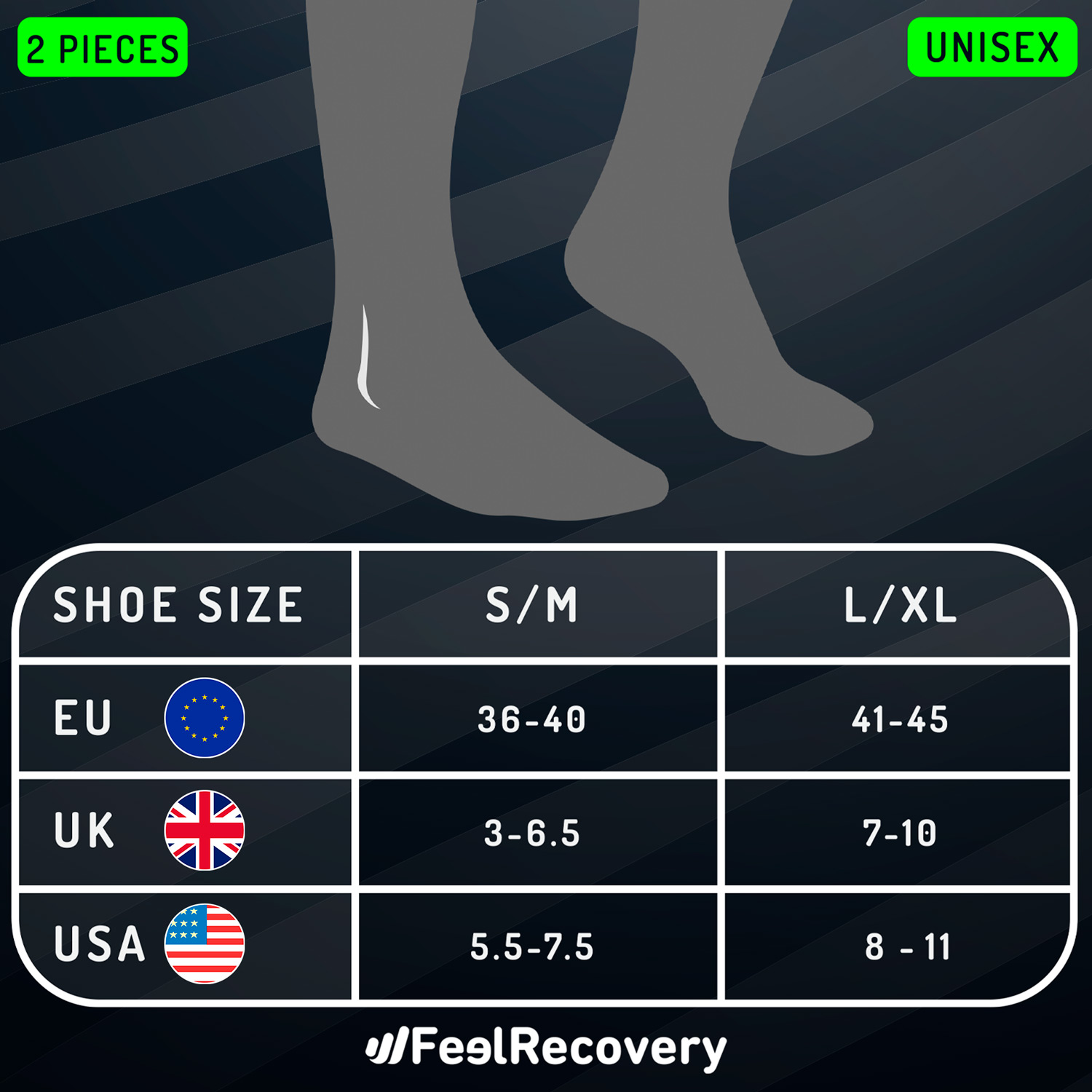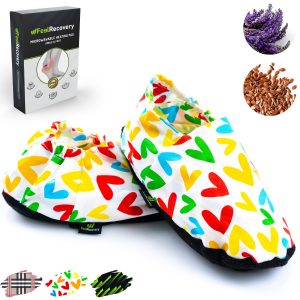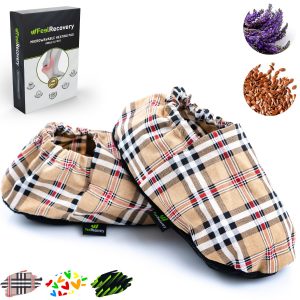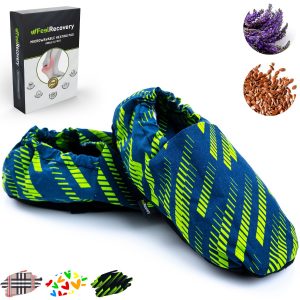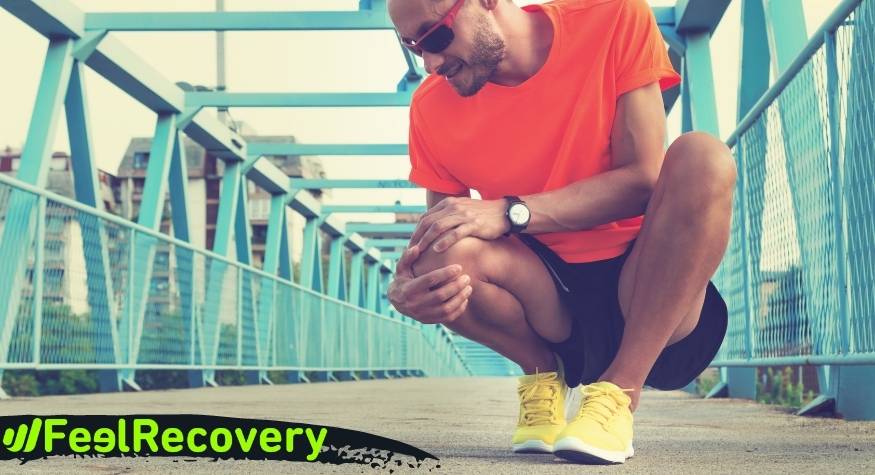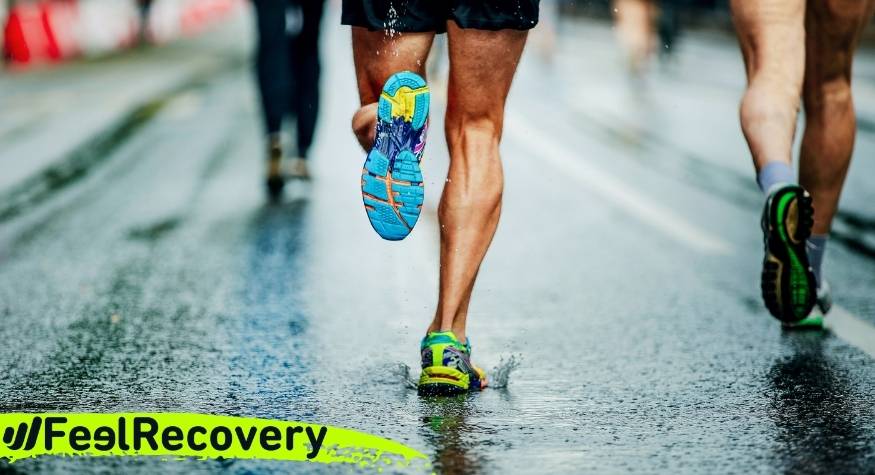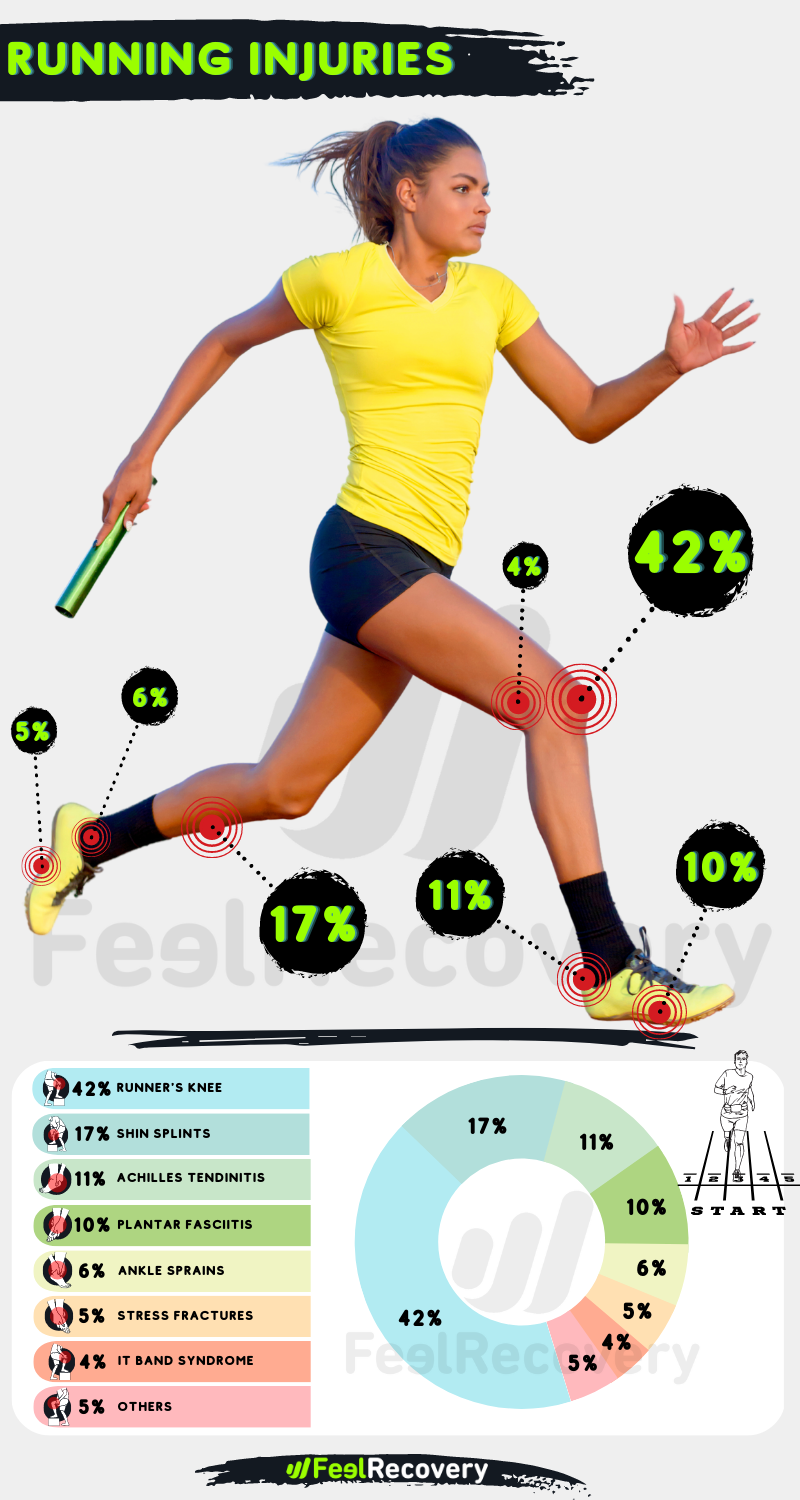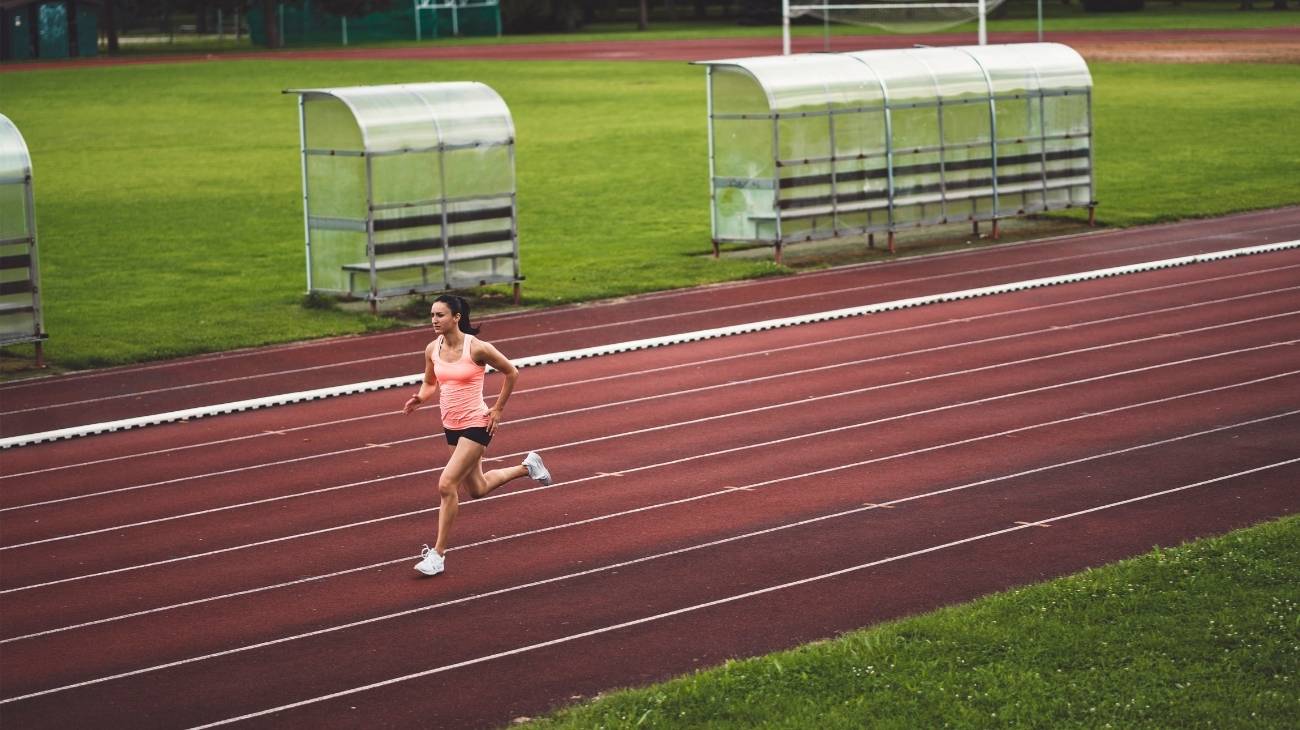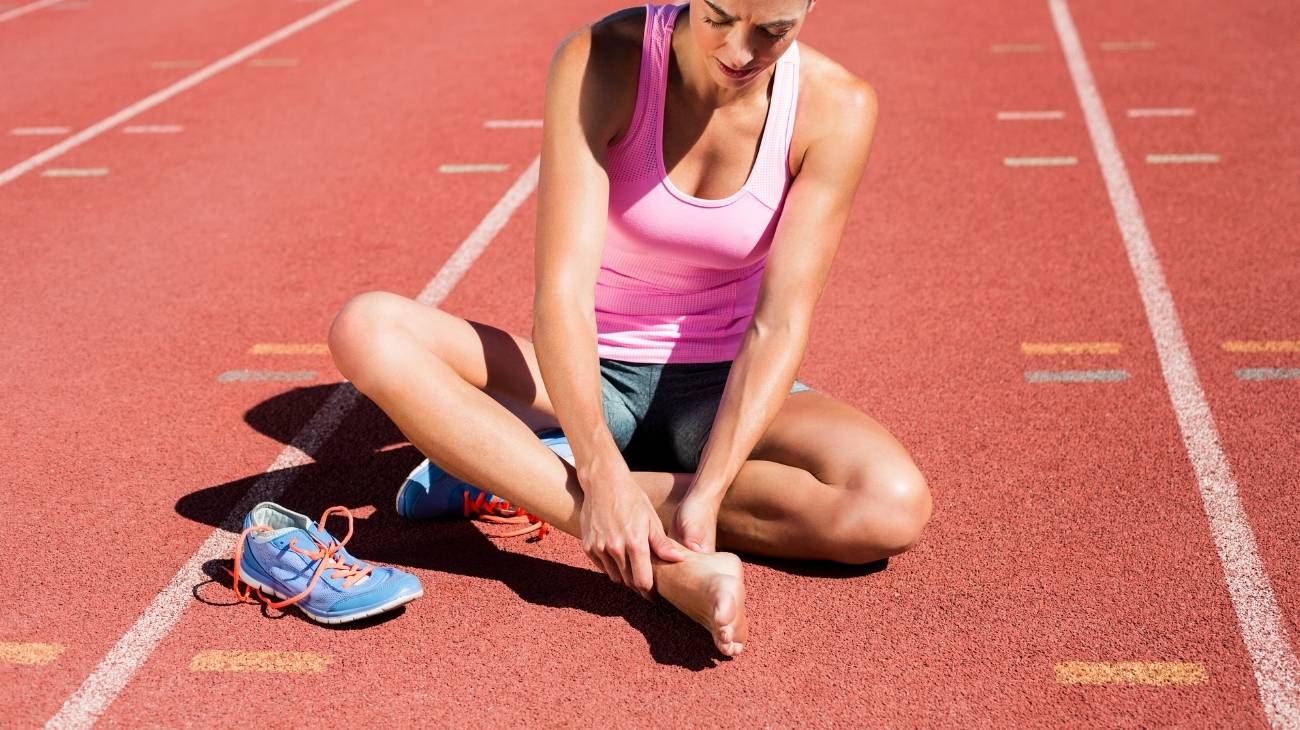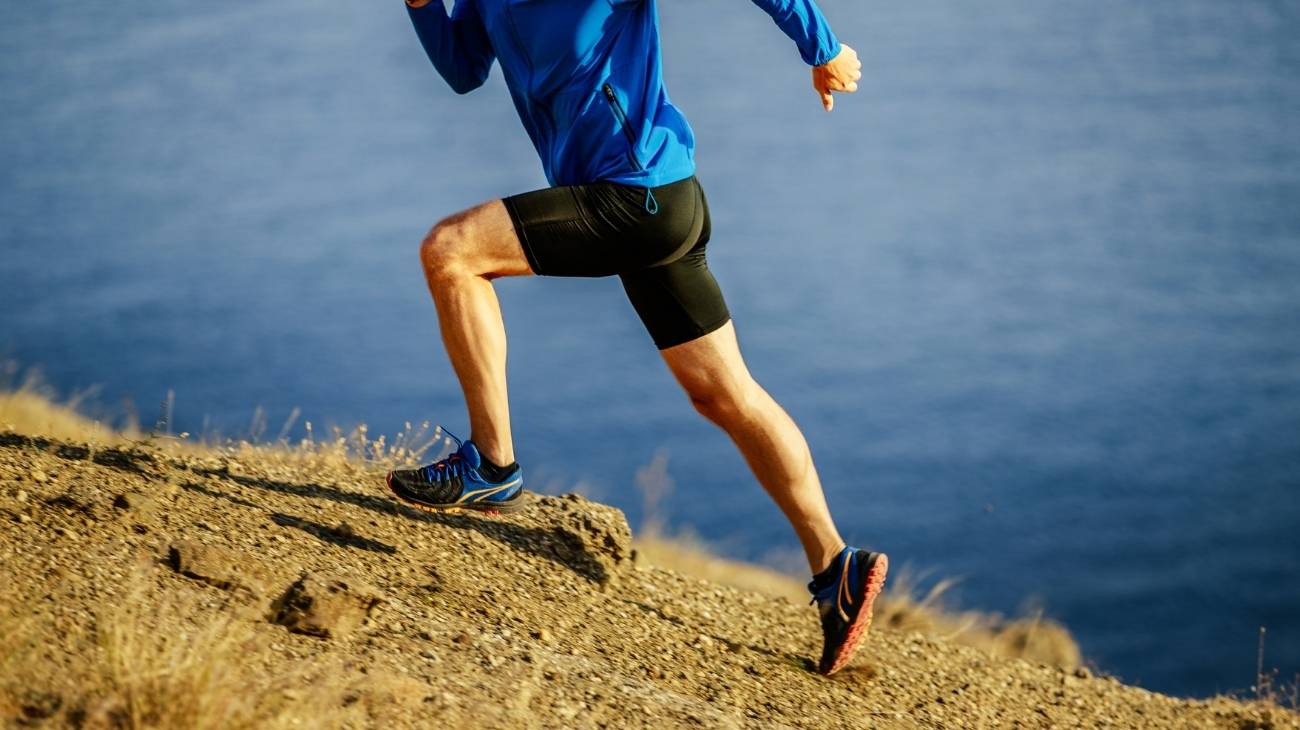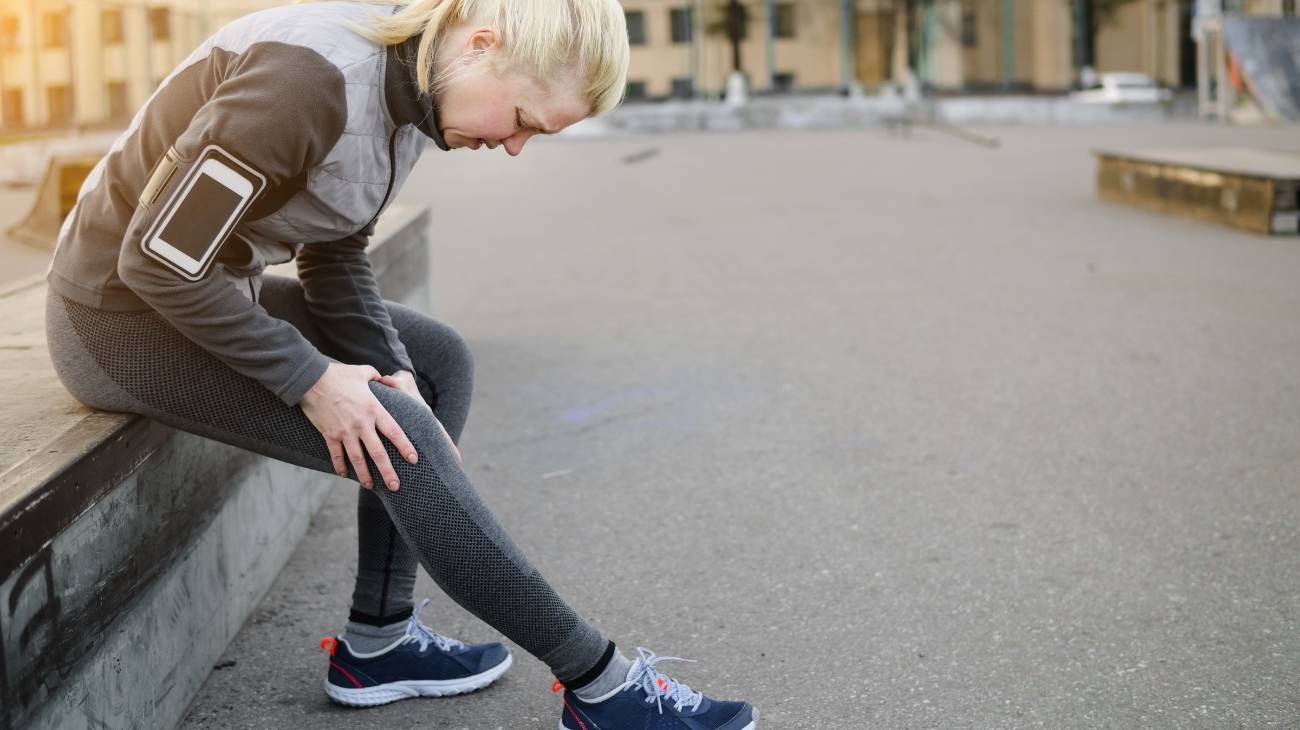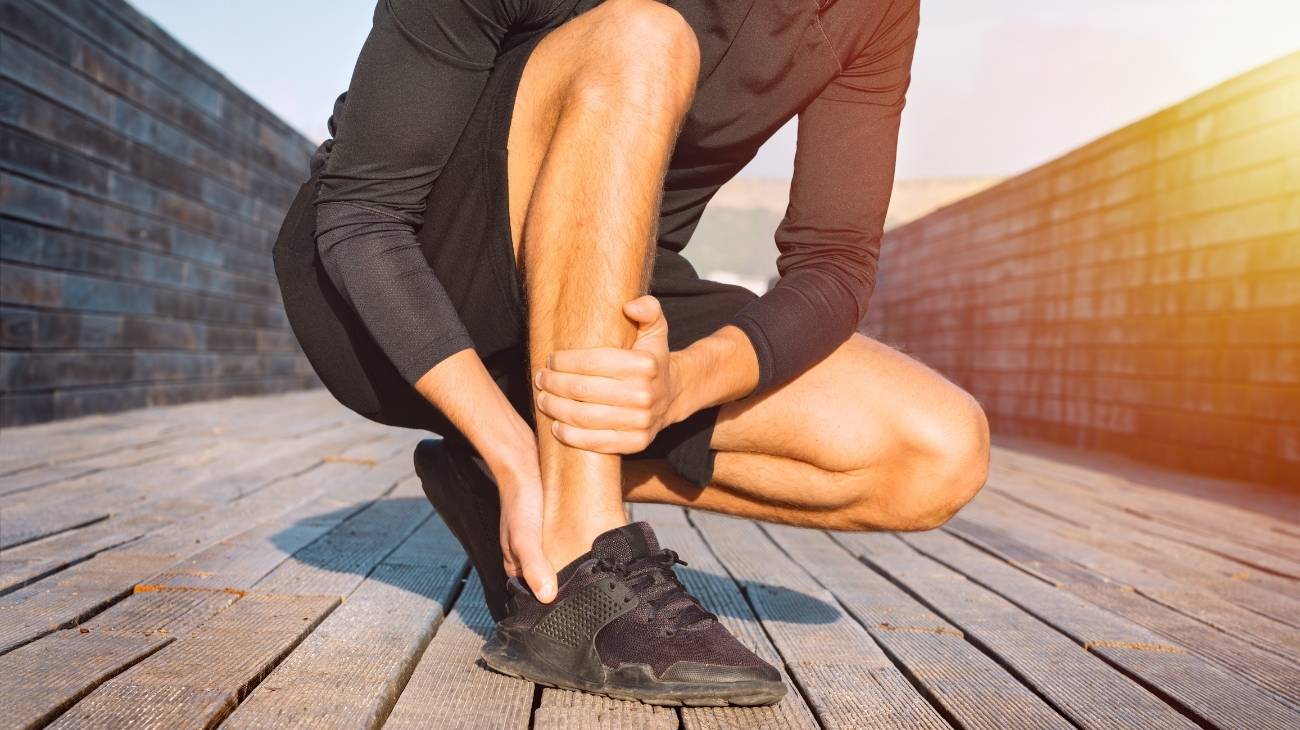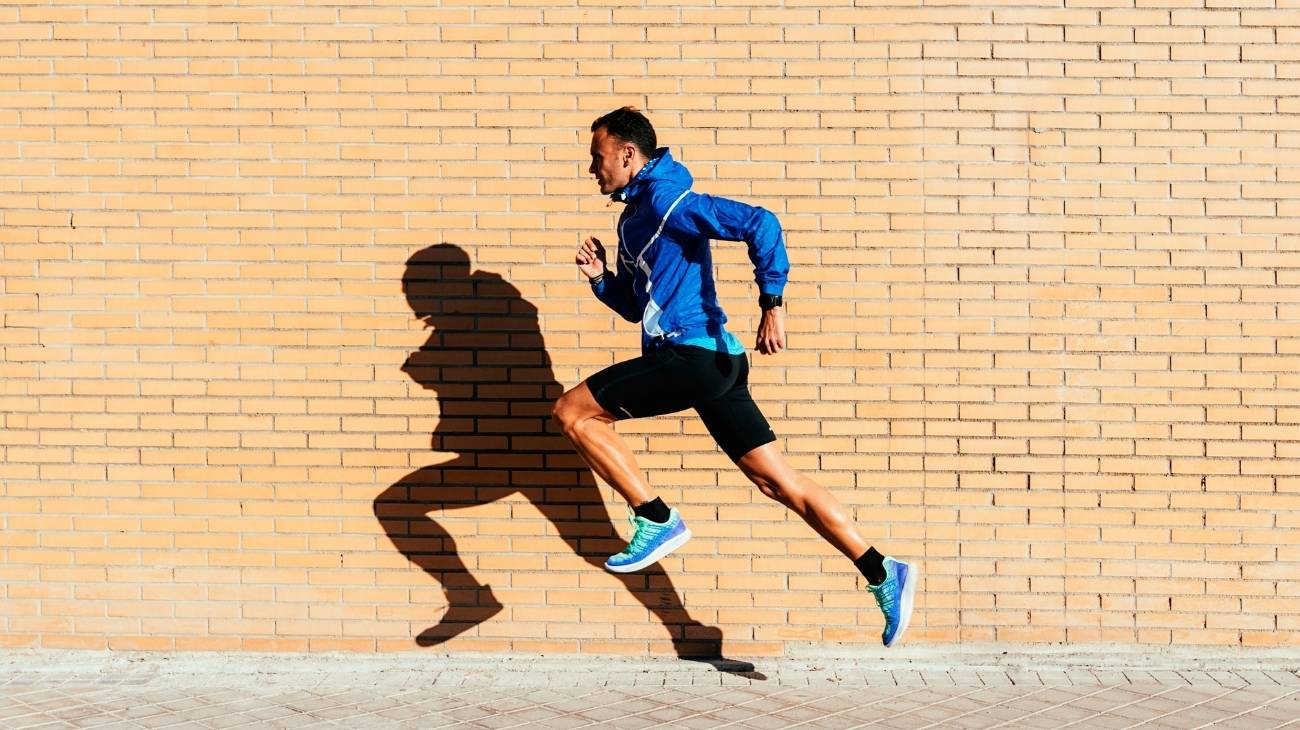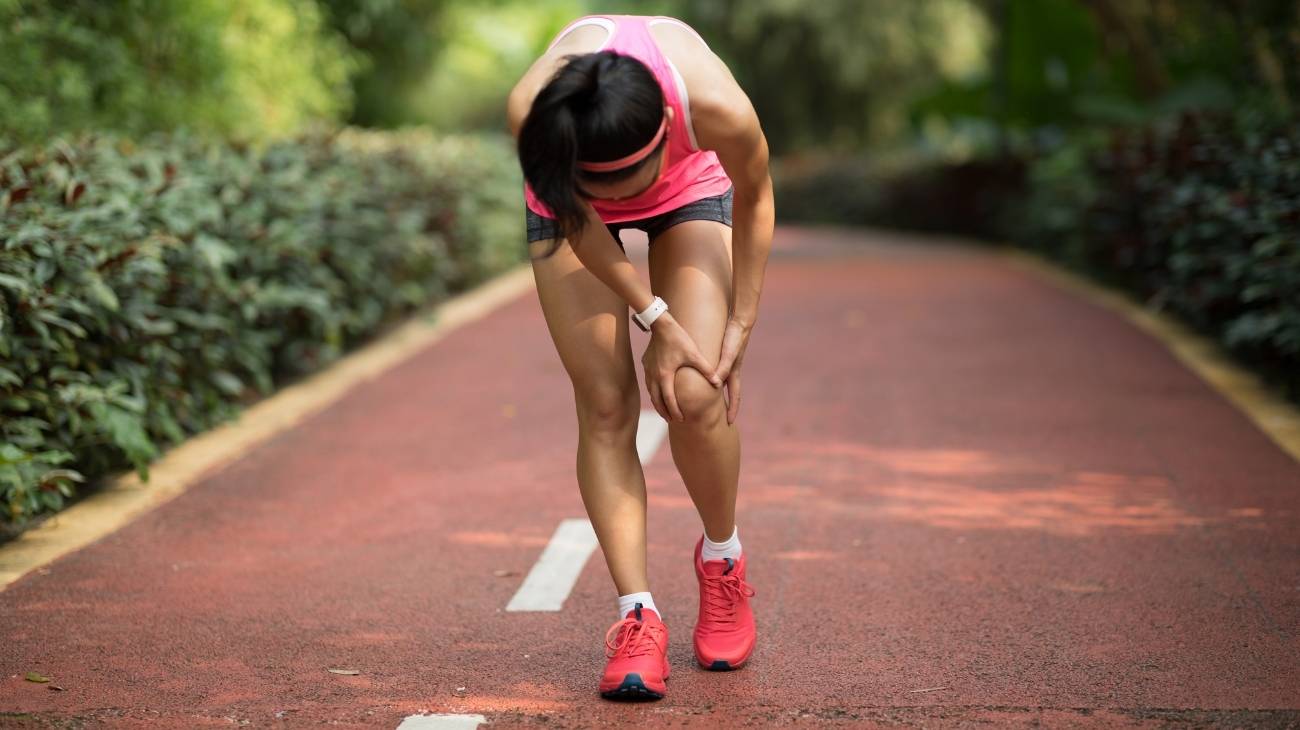More than 200 muscles are activated when running. Although running has dozens of benefits, the bones and joints suffer a great deal of wear and tear in each run, so it is advisable not to overdo it in order to avoid ailments and injuries.
When trying to increase speed and endurance in our workouts we can fall into the following list of injuries that we show you below. We will also show you how to prevent them and how to apply the PRICE therapy for first aid for sports injuries.
What are the most common types of running injuries?
If you're an amateur runner or have taken your hobby a step further, you'll know that we're not exempt from sustaining injuries while running. There are many reasons why we can suffer injuries when practising this sport that is so beneficial for our physical and mental health.
Here are some of the most common ones:
Plantar fasciitis
The most common thing that can happen is an inflammation in the fibrous tissues that are on the sole of the foot, this tissue is called fascia and is vulnerable to the demands of an athlete. It is an injury generated by the type of footwear, irregularities in the terrain, accelerating without the proper traction or by the runner's stride. It also happens when we start running after a long time without physical activity.
It is an ailment that generates pain in the sole of the foot, specifically from the heel to the base of the toes, which is usually controlled with painkillers, but when the pain begins to affect the runner's quality of life, ambulatory surgery is performed to release the accumulated tension in the soft tissue. These surgeries are performed in extreme cases, and the pain usually disappears with rest and non-invasive therapies.
Achilles tendon tendonitis
A sharp pain occurs at the top of the heel due to inflammation that can have several causes. You may not feel a sharp pain while running, but there will be stiffness in the stride and when the body comes to rest is when the pain appears.
There are several causes of Achilles tendon tendonitis; poor running technique, wearing the wrong shoes, receiving a blow to the base of the calf and even a slight twist can cause a problem like this.
Ankle sprain
The most common in running is the inversion sprain, when the foot is twisted inwards. This movement can result in anything from mild ligament damage to a complete tear, which, while rarely occurring in running, is possible when the runner falls. A doctor should always be consulted after such an injury to diagnose the injury.
This is because sometimes the pain can be mild, even when it is a complete tear of the ligaments, so a more detailed study should be carried out to determine the extent of the injury. In any case, after an ankle sprain, rest and cold should be maintained for the first 48-72 hours to control the inflammation, followed by the physiotherapeutic treatment necessary for recovery.
Tibial periostitis
This is the inflammation of a membrane that covers the tibia, called the periosteum. When suffering this injury there is an intense pain that is reduced when a special warm-up is carried out for this ailment. It appears after very aggressive changes in training that exceeds the muscular capacities when trying to finish routes that are very demanding for our physical condition, it also occurs when we run on very hard surfaces.
It is an injury that should be avoided, as it tends to recur every time you try to add more volume or intensity to your training. For this reason, in addition to a good warm-up, you should progressively increase the demands of your workouts and not suddenly increase the intensity without prior physical preparation.
Hamstring strain
This is caused by excessive stretching of the hamstring muscles at the back of the thigh. It causes an immediate inflammation of the area and presents a strong pain. It makes it impossible to continue running, and even makes it difficult to walk. As in other cases, a poor warm-up without the necessary exercises often leads to this condition.
Sudden changes in running speed are also the cause of this injury, especially if we do it when our hamstrings are already exhausted by the demands of the training we are doing. Before the muscle distends, there are often signs such as leg numbness and cramps, which should be a clear indication that the muscle is reaching its limit.
Lumbar injury
This manifests with pain in the buttocks or lower back. This pain is sudden, so your day-to-day training should be focused on this ailment. It is best to run upright in a natural way, as poor running posture, such as slouching, causes this ailment.
Another way to avoid it is to train the muscles of the lower back to better withstand the demands of each run we do, as some injuries are often related to overwork in that area. If we have strong, resilient abdominals and lower back muscles, we will avoid this injury to a large extent.
Knee bursitis
This isinflammation of the bursa due to the accumulation of stress generated by the impact absorbed by running for long periods of time. This is a bursa filled with synovial fluid located in the joints and its main function is to cushion the impacts of activities such as walking or running, as well as to reduce the friction between the ligaments, tendons and bones found in the joint.
Symptoms of bursitis can range from mild to severe pain, joint stiffness and swelling of the affected joint, with the ankles, hips and knees being the most common areas of running injury.
Blisters
This is the most minor running injury, and one that you may have to deal with for the rest of your life while running. It is caused by the skin rubbing against the shoe, which irritates the skin and causes the body to produce fluid in the area to protect the other cells of the dermis. While most of them are harmless, they should be treated with care as they can become infected and cause further damage.
The most common cause of this injury is wearing shoes that are too tight, but they can also usually occur simply from running a strenuous route on very hot days when we push our endurance to the limit. Fortunately, as time goes by, the skin gets used to the friction and they become less and less common, although it will always be normal for these blisters to appear from time to time.
Best products for running injury recovery
Bestseller
-
2 Ankle Compression Sleeve (Green/Navy)
£20,95 -
2 Ankle Compression Sleeve (Pink/Bordeaux)
£20,95 -
2 Calf Compression Sleeve (Black/Gray)
£20,95 -
2 Calf Compression Sleeve (Green/Navy)
£20,95 -
2 Calf Compression Sleeve (Pink/Bordeaux)
£20,95 -
2 Knee Compression Sleeve (Black/Gray)
£20,95 -
2 Knee Compression Sleeve (Green/Navy)
£20,95 -
2 Knee Compression Sleeve (Pink/Bordeaux)
£20,95 -
2 Thigh Compression Sleeve (Black/Gray)
£20,95 -
2 Thigh Compression Sleeve (Green/Navy)
£20,95 -
2 Thigh Compression Sleeve (Pink/Bordeaux)
£20,95 -
Ice Pack for Foot - Cold Therapy Socks (Black)
£20,95 -
Ice Pack for Foot - Cold Therapy Socks (Green)
£20,95 -
Ice Pack for Foot - Cold Therapy Socks (Pink)
£20,95 -
Microwavable Heated Slippers (Hearts)
£24,95 -
Microwavable Heated Slippers (Oxford)
£24,95 -
Microwavable Heated Slippers (Sport)
£24,95 -
Microwaveable Wheat Bag for Pain Relief (Hearts)
£20,95 -
Microwaveable Wheat Bag for Pain Relief (Oxford)
£20,95 -
Microwaveable Wheat Bag for Pain Relief (Sport)
£20,95
-
2 Ankle Compression Sleeve (Black/Gray)
£20,95 -
2 Patella Knee Strap (Black/Gray)
£12,95 -
2 Patella Knee Strap (Green/Navy)
£12,95 -
2 Patella Knee Strap (Pink/Bordeaux)
£12,95 -
Back Support Belt (Black)
£39,95 -
Back Support Belt (Green)
£39,95 -
Back Support Belt (Pink)
£39,95 -
Foot Massage Roller for Plantar Fasciitis (Black)
£20,95 -
Foot Massage Roller for Plantar Fasciitis (Green)
£20,95 -
Foot Massage Roller for Plantar Fasciitis (Pink)
£20,95 -
Ice Massage Roller Ball (Black)
£34,95 -
Ice Massage Roller Ball (Green)
£34,95 -
Ice Massage Roller Ball (Pink)
£34,95 -
Sacroiliac Support Belt (Black)
£24,95 -
Sacroiliac Support Belt (Green)
£24,95 -
Sacroiliac Support Belt (Pink)
£24,95 -
Soft Density Foam Roller for Recovery (Black)
£34,95 -
Soft Density Foam Roller for Recovery (Green)
£34,95 -
Soft Density Foam Roller for Recovery (Pink)
£34,95 -
Sport Compression Socks (1 Pair) (Black/Gray)
£20,95 -
Sport Compression Socks (1 Pair) (Green/Navy)
£20,95 -
Sport Compression Socks (1 Pair) (Pink/Bordeaux)
£20,95
How to prevent injuries in runners and athletes?
If you want to have uninterrupted activity as a runner at any level, it is best to prevent injuries as much as possible. To do this, you have to prepare your body to be able to withstand all the demands of the sport.
Warm up
Warming up is crucial for a runner, and should always be done by dedicating at least 15 minutes to conditioning your body before starting a run. This way you prepare your muscles and joints, as well as your cardiac system for the intense activity that is about to begin.
The warm-up starts with the mobility of all the joints in your body, because although you will use your legs the most, a run activates your entire cardiac and muscular system. The general rule is to start from the bottom up, starting at the ankle, moving on to the knees and hips, and then continue with the entire upper body, mobilising the elbows, shoulders and neck.
You should then perform a series of blood pumping exercises for your legs, this can be done with squats and lunges, as well as standing on the balls of your feet to activate your hamstrings and calves before you start your run. It is also advisable to do short sprints and some running technique exercises. This way your whole body will be in optimal condition for your daily training.
Cooling down
The recovery of the body starts with the cool down phase. We are not talking about recovery from injury, but rather the recovery of your body to its natural state of rest. It is not recommended that you stop suddenly and sit down at the end of your running session as this generates shock at the circulatory and muscular level due to the enormous amount of lactate that is generated during physical activity.
For an ideal cool-down, it is recommended that you gradually reduce the intensity of your jogging before reaching the end of the route, and finish with a gentle walk of about 5 to 10 minutes. When you stop, start a stretching session to eliminate the tension accumulated during the run, starting with the soleus muscles, calf muscles, quadriceps, hamstrings, glutes, lower back, and ending with the muscles of the upper body.
Good equipment
We are talking about clothing, accessories and footwear, the most important component for any runner, as a poor choice of sports gear can lead to injury.
So when choosing your equipment as a runner you should consider the following:
- Clothing: Today, all kinds of clothing has been designed for runners, from sweatshirts to long trousers and shorts. The most important thing in this regard is that it should be comfortable and above all made of a breathable fabric that does not accumulate the sweat that we secrete when we run. Compression garments such as compression sleeves, tights, ankle and elbow rbraces can also be used to minimise the impact of running strides.
- Accessories: It is becoming increasingly important for runners to monitor their body indicators during a run, especially their heart rate. You can use accessories such as a smartwatch or heart rate monitor to keep track of your heart rate per minute.
- Footwear: This is the most important thing to take into account, as your performance and the frequency of injuries will depend on it. Inadequate footwear, which does not absorb impact well, can lead to sprains and bursitis, cramps and even fractures. Before choosing your sports shoes, study your stride and check whether you are pronator, supinator or neutral, a podiatrist or sports physiotherapist will be able to analyse this parameter.
Nutrition and hydration
In a 30-minute run you can burn almost 400 calories, while if you increase it to 60 minutes at a high pace you can burn up to 1000 calories. That is why it is recommended for a runner to have a diet in which between 2500 and 3000 calories are consumed daily, so that we can replenish the effort of running without losing energy to carry out the other activities of our daily life.
These calories should come mostly from sources rich in carbohydrates (40%), protein (30%) and fat (30%). In addition, foods rich in vitamins D, E, A and B, which promote muscle and tissue regeneration, should be consumed, as well as minerals, especially iron, magnesium and zinc, which have a favourable effect on the production of red blood cells and prevent muscle spasms and pain that can be generated by pushing the body to its limits during a race.
However, nutrition will depend on your build, fitness level, level of training etc., and even your mood or daily work activities. We recommend that you consult a specialist doctor or nutritionist who will study your personal case and can evaluate all the aspects for a personalised diet according to your needs.
Hydration is very important, drink at least one glass of water every hour during the day while awake, so that the body never becomes dehydrated, as this directly affects the soft tissues such as ligaments, joints and muscles. While small sips of water are consumed throughout the race, it is advisable not to drink only when thirsty, as this is the first sign of dehydration.
Fitness
By nature, a runner will have a slim, athletic build, but this doesn't mean that if you don't have it you can't do the sport. The reality is that the most important thing is to have optimal aerobic conditions so that we can run as often as possible without negative effects on our cardiovascular system.
To acquire this endurance, it is necessary to start slowly and increase the demand every week until you reach the goal of enduring a jog at an intense pace for 20 minutes or more, which is the minimum that a runner can run in one session.
If you are just starting to run and cannot last 15 minutes at a time, it is advisable to alternate 2-3 minutes of gentle running with another 4-5 minutes of fast walking, so that little by little, our body and joints become accustomed to running for longer periods of time.
Recovery therapies
If we suffer from any ailment that has to keep us away from sport, there are non-invasive therapies that can help us recover as soon as possible.
The most effective are the following:
- Sports massage: this consists of a series of massages to stimulate muscle regeneration through techniques such as kneading, articulations and percussions. It is a basic therapy in the recovery of sportsmen and women after injuries. In addition, sessions are also recommended to prevent ailments as it is an excellent way of draining tension and stress accumulated from intense races.
- Use of hot and cold therapies: cold and heat can be used to achieve different objectives. The former promotes vasoconstriction and has an analgesic effect, ideal for alleviating symptoms such as pain and inflammation in the early stages of an injury. Heat is used more for prevention as its vasodilator effect improves blood flow and has a relaxing effect that strengthens muscle fibres.
- Use of compression garments: In recent times compression garments have been used in running to prevent muscle injuries as they help to minimise the impact on the muscles generated by the action of running, as well as improving blood circulation. There are also therapeutic garments such as ankle, knee and thigh compression garments to alleviate injuries in their respective joints.
- Use of acupressure therapies: this holistic therapy is ideal for both preventing and treating injuries. It involves the stimulation of certain points on the body by applying pressure to help drain and release tension that builds up in specific areas of the body.
- Use of thermotherapy and cryotherapy: this refers to the use of cold and heat in a more advanced way to achieve specific objectives in the recovery of the cells that make up our muscles and other soft tissues. In this case, extreme temperatures are applied, so they must always be applied by a professional.
How to apply the RICE therapy to treat first aid injuries in runners?
The RICE therapy indicates the basic first aid that should be applied to an injury in the first few minutes after it has occurred, and can even be maintained a little longer to achieve a more pleasant recovery. It was created in the 1970s, and in this 21st century it received an update called the PRICE therapy in which an extra step was added to the method.
- Protection: whether it is a sprain or strain that we suffer while running, the first step is to protect the affected joint or muscle with a simple bandage and taking care not to re-injure the area.
- Rest: if it occurs during a run, we should stop physical activity completely and stop using the affected limb to reduce the risk of aggravating the injury by straining the ligaments and tendons when they are injured.
- Ice: once the injury is secured we proceed to apply ice using a cold compress so that its vasoconstrictor and analgesic effect reduces swelling and relieves the pain that will surely be present.
- Compression: after controlling the inflammation, we proceed to apply a compressive bandage or a compression garment such as a knee brace, ankle brace or girdle, depending on the affected joint, so that the inflammatory process does not start again after a few minutes.
- Elevation: finally, we proceed to elevate the injured joint or limb above the level of the heart to reduce the blood supply and thus prevent further inflammation.
When should we see a specialist for the treatment of injuries in runners and athletes?
Although most running injuries, except for an occasional fall or accident, are minor and can be treated with rest, such as cramps or even tendonitis, on certain occasions we must see a doctor who will carry out an accurate assessment to diagnose them and define the most effective treatment.
Some of them are the following:
- Sprains: these are often misleading injuries as it is difficult to determine the extent of ligament damage without the necessary knowledge. Often we can feel a slight pain with hardly any swelling that makes us think that it is a simple sprain, but in reality the tear has been almost total. Therefore, if we observe that a sprain is not evolving as expected if it is mild, we should not hesitate to go to a doctor who will tell us exactly what is happening.
- Fractures: a fracture is easy to diagnose because its symptoms are obvious, but knowing how damaged the bone is is a job that is only within the reach of a health professional. It is important to go as soon as possible because if the bone begins to weld out of position, we will have to go to the operating theatre to repair this possible deformation.
- Plantar fasciitis: this injury can be treated by oneself, but there comes a time when it becomes recurrent and almost chronic. If you notice that every so often you suffer from inflammation in the fascia, to such an extent that it affects your quality of life outside of running, you should consult a doctor to determine the best way to eradicate the problem.
- Osteoarthritis: this degenerative disease should be monitored frequently because if the wear and tear becomes too pronounced, the joint will be compromised to the point of having to be replaced as often happens in the knee or hip.
References
- Fields, K. B., Sykes, J. C., Walker, K. M., & Jackson, J. C. (2010). Prevention of running injuries. Current sports medicine reports, 9(3), 176-182. https://journals.lww.com/acsm-csmr/Fulltext/2010/05000/Prevention_of_Running_Injuries.00014.aspx
- Van Mechelen, W. (1992). Running injuries: a review of the epidemiological literature. Sports medicine, 14, 320-335. https://link.springer.com/article/10.2165/00007256-199214050-00004
- Messier, S. P., & Pittala, K. A. (1988). Etiologic factors associated with selected running injuries. Medicine and science in sports and exercise, 20(5), 501-505. https://europepmc.org/article/med/3193867
- Lysholm, J., & Wiklander, J. (1987). Injuries in runners. The American journal of sports medicine, 15(2), 168-171. https://journals.sagepub.com/doi/abs/10.1177/036354658701500213
- Hamill, J., van Emmerik, R. E., Heiderscheit, B. C., & Li, L. (1999). A dynamical systems approach to lower extremity running injuries. Clinical biomechanics, 14(5), 297-308. https://www.sciencedirect.com/science/article/abs/pii/S0268003398900924
- Arnold, M. J., & Moody, A. L. (2018). Common running injuries: evaluation and management. American family physician, 97(8), 510-516. https://www.aafp.org/pubs/afp/issues/2018/0415/p510.html
- van Mechelen, W., Hlobil, H., Kemper, H. C., Voorn, W. J., & de Jongh, H. R. (1993). Prevention of running injuries by warm-up, cool-down, and stretching exercises. The American journal of sports medicine, 21(5), 711-719. https://journals.sagepub.com/doi/abs/10.1177/036354659302100513
- Junior, L. C. H., Costa, L. O. P., & Lopes, A. D. (2013). Previous injuries and some training characteristics predict running-related injuries in recreational runners: a prospective cohort study. Journal of Physiotherapy, 59(4), 263-269. https://www.sciencedirect.com/science/article/pii/S1836955313702030
- Saragiotto, B. T., Yamato, T. P., Hespanhol Junior, L. C., Rainbow, M. J., Davis, I. S., & Lopes, A. D. (2014). What are the main risk factors for running-related injuries?. Sports medicine, 44, 1153-1163. https://link.springer.com/article/10.1007/s40279-014-0194-6
- Brody, D. M. (1982). Techniques in the evaluation and treatment of the injured runner. The orthopedic clinics of North America, 13(3), 541-558. https://europepmc.org/article/med/6124922





























